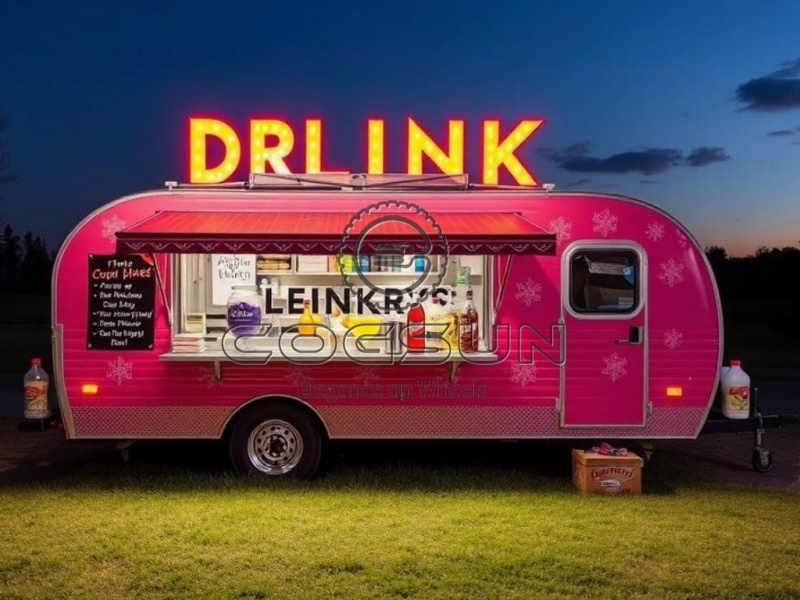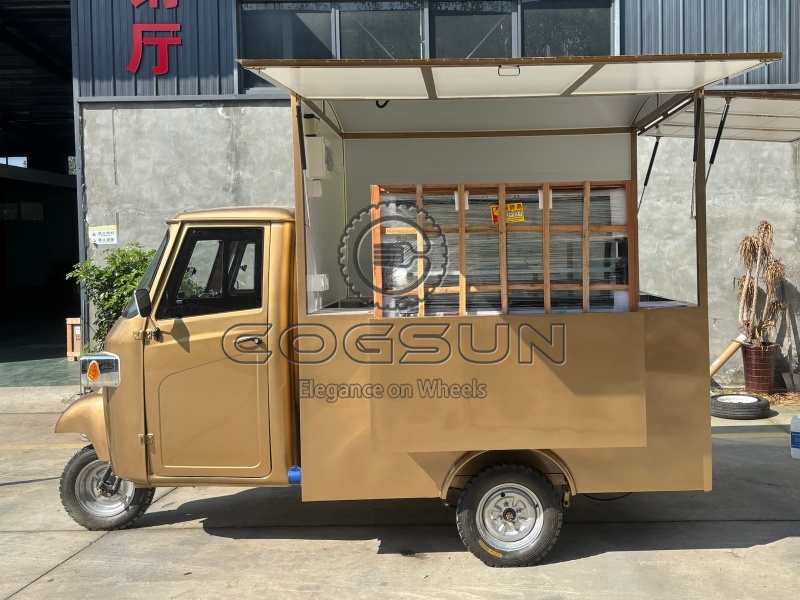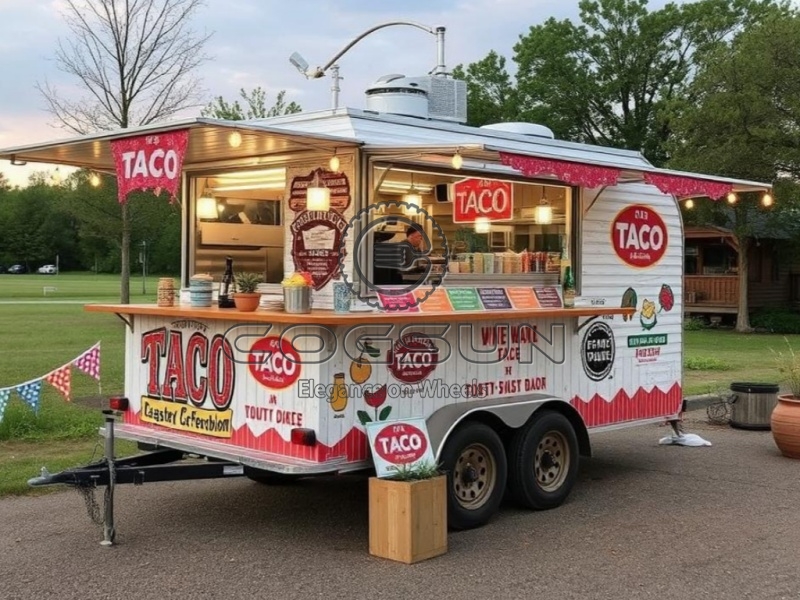A drink food trailer is a modular vehicle that integrates beverage production, sales, and mobile service. Typically constructed from a trailer chassis, it’s equipped with a full complement of beverage production equipment, storage systems, and brand display space. Compared to traditional fixed stores, its “stop-and-go” flexibility makes it a key platform for events, festivals, street markets, and catering services.

Core Features
1. Modular Design, Adaptable to Diverse Scenarios
- The Hyundai Drink Food Trailer utilizes interchangeable equipment modules, allowing the same trailer to quickly switch between different formats, such as coffee, fresh juice, craft beer, or ice cream. For example, one brand implemented a “C-in-the-Morning, A-in-the-Late-night” (coffee-in-the-morning, wine-in-the-late-night) business model by swapping out equipment modules, resulting in a threefold increase in daily revenue.
2. Highly Recognizable Brand Expression
- The trailer’s exterior design breaks with tradition, incorporating neon strips, 3D paint, and interactive projection technology to reinforce brand recognition. For example, an ice cream trailer with a polar bear-themed livery and dry ice effects attracted families to take photos and share, garnering over 500,000 impressions on social media.
3. Intelligent System Support
- Built-in IoT devices monitor temperature, inventory, and equipment status in real time, and paired with a mobile POS system, digitize the entire “scan code to order, prepare, and pick up” process. One brand optimized its menu through data analysis, increasing the proportion of popular drinks from 40% to 65%.
Internal Equipment
1. Beverage Preparation Core Area
- Commercial-grade Refrigeration: Dual-temperature refrigerator (-18°C to 10°C) and ice maker (200kg/day) support a full range of cold drinks, smoothies, and more.
- Modular Worktop: 304 stainless steel countertop with non-slip drainage grooves, customizable connections for coffee machines, juicers, beer kegs, and more.
- Power and Water Systems: 380V three-phase power supports simultaneous operation of multiple devices, and a separate 50L hot water tank and wastewater recovery system ensure long-term outdoor operations.
2. Storage and Security Design
- Tiered Lockers: The upper level stores consumables such as paper cups and straws, the middle level stores raw materials, and the bottom level features a secure locker for cash and valuables.
- Ventilation and Fire Protection: A top exhaust system quickly removes steam, and the facility is equipped with dry powder fire extinguishers and smoke alarms. NSF food safety certification is available.
3. Brand Display and Interaction Area
- LED Display: Scrolls menus, promotional information, or brand stories, attracting customers from 50 meters away.
- Order Pickup Window: Features a retractable mosquito screen for optimal hygiene and ventilation.
Application Areas
1. Street Economy and Community Services
High-Frequency Scenario: Schools, office buildings, and community plazas. Specializing in “affordable drinks under 10 yuan,” the area boasts a repurchase rate exceeding 60%.
Case Study: A juice truck sold over 300 cups in a single day through a “buy one, get one free” promotion, becoming a popular community check-in spot.
2. Large-Scale Events and Music Festivals
Customized Services: Provide themed cocktails (such as fluorescent cocktails) for music festivals, paired with limited-edition cup sleeves and merchandise.
Data: During the Strawberry Music Festival, a certain brand achieved a single-day revenue of 80,000 yuan, accounting for 25% of the event’s total catering revenue.
3. Corporate Team Building and Customized Weddings
Specialized Menus: Design “conference specials” (such as decaf coffee and energy bar combos) or wedding “signature drinks” (such as custom cocktails for the newlyweds) based on company needs.
Value-Added Services: Custom trailer exteriors, photographer support, and social media livestreaming support are available.
4. Collaboration between Tourist Attractions and Cultural IPs
Integration of Scenery: Launch “regional specials” (such as West Lake Longjing Latte and Disney Cartoon Smoothie) in ancient towns and theme parks.
Case Study: A brand collaborated with the Palace Museum’s cultural and creative department to launch a “A Thousand Miles of Rivers and Mountains” themed tea beverage, resulting in monthly sales exceeding 5,000 cups per store.




